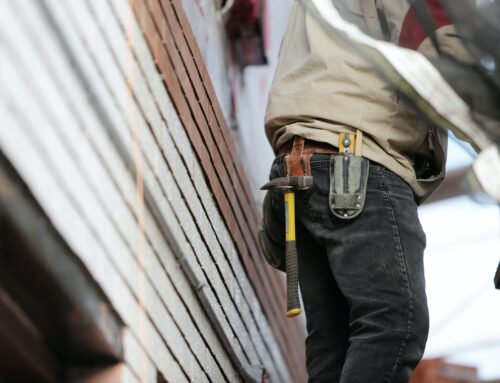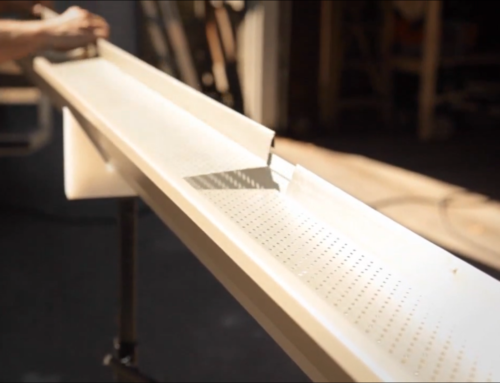
There is a certain peace of mind that comes from having a regular schedule when it comes to your gutter maintenance. You’ve cleaned them, secured them, repaired them, and then repeated as needed throughout the seasons. Between each scheduled inspection they remain up there on the roof and out of harms away, leaving your conscience clear – job well done homeowner.
However, when it comes to downspouts it’s a different story.
Your downspout runs down the side of your home. It’s right there, out in the open, susceptible not just to the climate (as are your gutters) but to all other variables that pass by your outdoor carport and home exterior. Yes, downspouts have issues to content with that your gutters don’t.
Today we will look at the issues faced exclusively by downspouts and provide a few helpful tips on how to navigate through them, ensuring that this important component of your gutter system remains free from harm and continues to do its job by expelling rainwater where intended.
5 Gutter Downspout Concerns, and How to Manage Them
1. Clogged Points of Exit
Downspouts that expel above your soil curve to point the flow away from the edge of your home. This elbow is often where debris will collect, causing your downspout to backup. This backup grows as rainfall continues, allowing more debris to collect, and can ultimately damage the system when excess weight builds. Thus, it is essential that you check the expulsion point of your downspouts more regularly that you do your gutters. Because downspouts are at ground level this is an easy task to perform before each rainy day forecast. There are also downspouts that expel below soil, into a PVC pipe and leads to either a municipal storm-sewage system or a dry-well/catch-basin. Underground downspouts require a bit more care. Before “rainy season” you’ll want to dig a hole and inspect the connecting point where the downspout meets the PVC pipe to ensure that the pipe is neither broken or clogged. The latter is not exactly the easiest DIY task so you may want to bring in a gutter repair specialist.
2. Narrow or Poorly Fitted Outlets Can Spell Spillage
Your home may have been outfitted with gutter-to-downspout outlets (the point where your downspout is connected to your gutters on the eaves) that are too narrow/small to accommodate the rainfall and airborne debris common to your area. When the outlets are too small, the slightest bit of debris can catch and clog the point of entry, once again allowing rainwater to collect. Make sure that your outlets are wide enough to accommodate your climate. If not, you may need to have them fabricated to suit your system or it may simply be time to invest in a new system. In addition, poorly fitted outlets (ones that don’t match the exact dimensions of your downspout) can leak rainwater and shift during storms. Ensure that the outlet perfectly matches your downspout.
3. Doorway to Rodents
Downspouts are welcome mats to mice, rats, and especially savvy climbers such as chipmunks and squirrels. They can get in either underground (smaller burrowing rodents) or above. For starters, regular debris inspection and cleaning will make your downspouts less appealing to rodents, and the smooth surface will make it more difficult to climb. When it comes to the more skilled upward scalers additional measures need to be taken. Downspout openings can be outfitted with a mesh-like downspout guard (found at your local hardware retailer) and there are eco-friendly and humane rodent repellants to consider. View our complete article on how to protect your gutters (and downspouts) from rodents here.
4. Pooling of Runoff Rainwater
If your downspout expels rainwater at the above soil base of your home you are at risk for pooling during heavy bouts of rain. This pooling can find its way into your home. Not good. It is essential to point your downspout exit away from the foundation. Ensure that you install a rainwater diverting extension to the opening of your downspout. This device (available at your local home and garden retailer) will direct heavy rainwater several feet away from the base of your home.
5. Bumps and Bruises from Unnatural Elements
Because downspouts are located at ground level, they are susceptible to elements that your gutters above are not. These “elements” can include neighborhood kids (soccer balls, bikes, etc.), rambunctious (and big) household pets, cars (when downspouts are located near the carport), and your own accidental nature that can rear its head when performing outdoor chores. Ensure that your downspouts are installed away from the day to day exterior activities of your household. To further hedge this risk, check the downspouts for loose screws and brackets so that they run tight and close to your exterior walls, ensuring that any nudge goes unpunished.







Leave A Comment